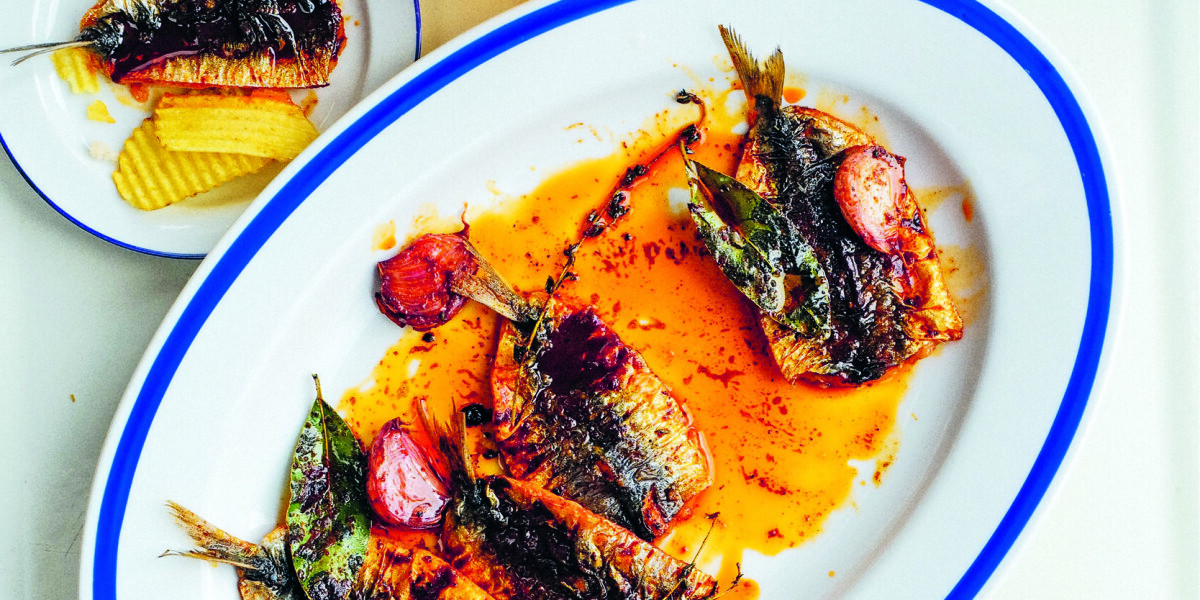
Recipe: test these tasty sardines en escabeche
- Select a language for the TTS:
- Spanish Female
- Spanish Male
- Spanish Latin American Female
- Spanish Latin American Male
- Language selected: (auto detect) - ES
Play all audios:

THIS DISH FEATURING SARDINES, VINEGAR AND PAPRIKA IS POPULAR IN FRENCH CATALONIA Colman Andrews, who wrote magnificently on catalan cuisine, theorizes that escabeche (escabetx in Catalan)
was a technique that the Catalans taught to Europe, although the word might well have its roots in the Perso-Arabic word sikbaj, meaning ‘vinegary stew’. Either way, this quick preparation
has long been popular in French Catalonia as well as south of the border. This is a well-travelled recipe: I have seen this style of escabeche crop up in collections of Pieds-Noirs
(Algerian-born people of European descent) recipes issuing from the North African coast, and this type of recipe also travelled with Spanish colonizers to South America. Sardines are the
best fish for this by far, but by all means try it with trout or mackerel fillets too. I have seen many iterations of escabeche – including Escoffier’s, no less – that mess around with bits
of onion and crunchy carrots, but I am more interested in the earthy Catalan original, with just quickfried fish, olive oil, vinegar, paprika, bay and garlic. This recipe is adapted from
Irving Davis’s A Catalan Cookery Book, which is a grumpy, terse, illuminating delight. Escabeche is a tasty method of preservation, and your sardines will keep for more than a few days in
their vinegary marinade, but are equally good eaten straight away if you simply can’t wait. Read also: C'est la sardine qui a bouché le port de Marseille INGREDIENTS Serves 6 – 1 2
depending on appetites * 12 butterflied sardines * flour, for dusting * olive oil * 6 garlic cloves, unpeeled * 2 bay leaves * 1 sprig of thyme * 2 tsp sweet paprika * 1 tsp hot paprika * 5
tbsp sherry vinegar or red wine vinegar * salt METHOD * Season the sardines with salt and leave for 1 hour. Pat dry with kitchen paper and lightly flour the skin side only. Heat some olive
oil in a large frying pan and briefly fry the sardines on the skin side only until coloured gold but not cooked through – the fish should keep its raw appearance on the flesh side. Transfer
the sardines to a shallow dish – arrange them in one layer. * Wipe out the pan and pour in a fresh slick of olive oil, around 5mm/¼in deep. Slowly fry the garlic cloves until they have
softened and turned golden brown. Remove the pan from the heat, pop in the bay leaves and thyme, and stir around until you are happy that the oil has been infused with their flavour. With
the pan still off the heat but the oil hot, add both paprikas and stir thoroughly for 30 seconds to cook the paprika without burning it. Finally, pour in the vinegar, give the pan a shake,
and allow to cool slightly before pouring the lot over the fish. * Cool to room temperature, then refrigerate for a good couple of days before eating. Eat slightly cooler than room
temperature, with a selection of other snacks: olives, crisps, bread, beer etc, or on top of toast rubbed with tomato and garlic. Extract credit: from ‘Frontières: The Food of France’s
Borderlands’ by Alex Jackson (Pavilion Books). Read also: Discover Seasonal French Produce: Fresh Vegetables, Fruits, and Seafood for the New Year
